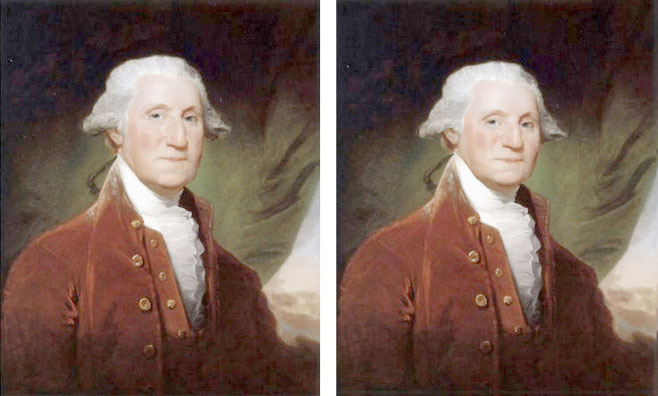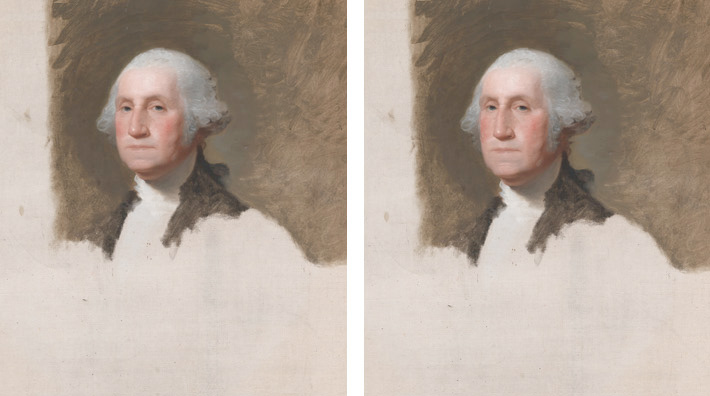The Vaughan Portrait of George Washington
(Or Correcting Gilbert's Faux Pas)

George: Before and After
The first thing you're taught if you take a portrait class is that the distance from the chin to the eyes is the same as from the eyes to the top of the head. There are rarely any exceptions to this rule and it is fundamental to making realistic portraits.
Forgetting this rule is one of the easiest mistakes to make. Usually beginners make the top part of the head too short. This is because they focus on the forehead. They think the top of the forehead is the same as the top of the head. Actually the skull continues to rise until about 1/3 the way from the back. That is the highest part of the human body.
But if you measure the face on the Vaughn portrait (or any of the other copies), you'll find the top part of George's head is only 90 % of the bottom. That may not seem like much but it is enough to give the portrait a slightly unnatural look.
Another way to look at the issue is to take a portrait that does have the proper proportions - the Athenaeum Portrait - and give George the long jaw of the Vaughan Portrait. Although if looked at on it's own, the "Long-Jawed Athenaeum" looks OK, but when compared with the original it is definitely off.

The Long Jawed Athenaeum (on the Right)
Is it possible that the latern jaw of the Vaughan Portrait was not a mistake? Well, it is possible, we suppose. George's dentures were known to distort his face. They were also kept in place by springs that if you relaxed would force your jaws apart. So it is possible that we're seeing the effect of George's false teeth plus perhaps Gilbert sitting somewhat lower than usual relative to George.
This, though, isn't likely since according to Gilbert, George had been fitted with dentures for the Athenaeum Portrait - dentures which Gilbert pointed out "constrained" his face. As we see, in the original portrait there is no such Vaughn-like distortion.
The answer? Well, due to the Vaughn Portrait's rather sketchy nature, it seems to have been painted rather hastily. So the most likely explanation for George's Long Vaughan Jaw is just a mistake that sometimes even experienced artists can make. And in his haste, Gilbert just let it slide.